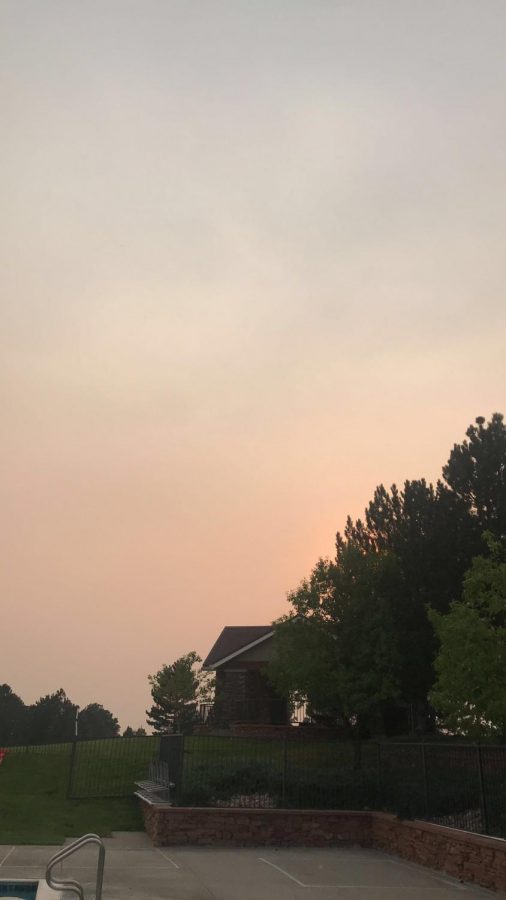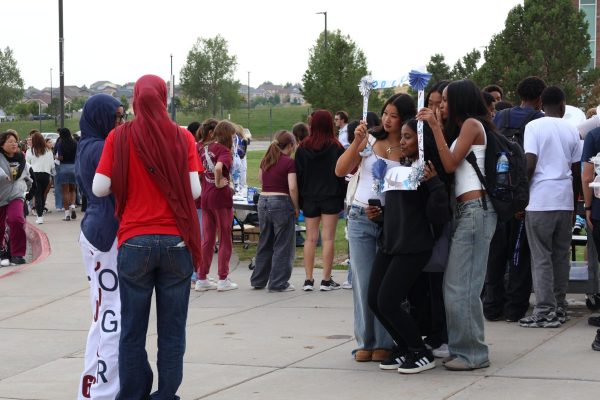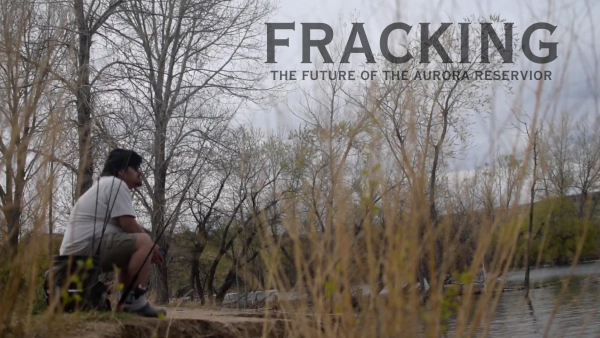The Haze Upon Us
The gradient between smoky air and clear skies is visible above Tallyn’s Reach pool on Sept. 7. “As a lifeguard the fires have impacted me negatively because it makes it really difficult to work outside when I am constantly inhaling the ash and smoke,” said Gabby Burns (12). Burns is a lifeguard who works at Tallyn’s Reach and finds that the atmosphere has been murky for the past few months in a way she’s never seen before.
Colorado is on fire.
The sky is full of cloudy smoke, raining flakes of ash down on the residents of Aurora, and while the setting sun catching the smoky atmosphere makes the sunsets that much more spectacular, health concerns and the impact of the fires miles away weigh heavy on all of us.
Over 15 wildfires are raging across the state right now, devouring acre upon acre of forests. There are so many; they warrant names to differentiate. On Tuesday, Sept. 8, the most significant fire is the Pine Gulch fire, 18 miles north of Grand Junction, which has consumed close to 140,000 acres and was started by lightning on July 18. On Aug. 27, the Pine Gulch fire became the most massive fire in Colorado history, surpassing the Hayman fire near Colorado Springs in the summer of 2002. The Cameron Peak fire is a close second, burning 103,000 acres, with a cause under investigation. The majority of the fires are further away from Aurora than one would expect, looking at the skies.
Students are being impacted by the fires even though the fires are up to 80 miles away.
“The air quality has really changed in Colorado,” said Kayla Gibson (12). Gibson is a cheerleader, having had to practice in masks because of safety precautions, and the air quality through a mask and hazy air quality have made her practice hard.
Gibson isn’t the only athlete experiencing a change in their ability to play.
“I haven’t noticed any impact on anything but running,” said Hunter Kenney (11). “Breathing is harder now.” Kenney, a runner on the cross country team, has experienced a difficulty performing that Gibson and other student-athletes all share.
The impact of the smoky air, besides beautiful sunsets and plumes of ash rising on the horizon, has been hard to judge, as is echoed by students.
“The smoke didn’t change my mountain trip that much,” said Kate Decker (12). Decker traveled to the mountains near one of the more significant forest fires on Sept. 5 and described her experience as being relatively untouched by the fires. “The sky looked cool for a little while.”
But other students see the alarming effects of the fires in our community.
“I am concerned for multiple members of our community because of the fires,” said Gabby Burns (12). “I’m worried about the people with breathing problems, older people, and also people who have been affected by Covid-19. They may not be able to take in as much smoke and ash that is being introduced into their bodies because their immune systems are weakened.”
“My allergies are worse than they have ever been,” said Keegan Chatham (12). Chatham has spent the last few weeks blowing his nose and taking lots of allergy medication in attempts to counter the smoke’s effects on his system.
While stifled minorly by a freak snowstorm during the week of Sept. 17, the fires refueled and have been burning for days.
“The worst part about the haze in the air is that I know it’s negatively affecting the environment, and I know so many people are suffering because of it,” said Burns.








